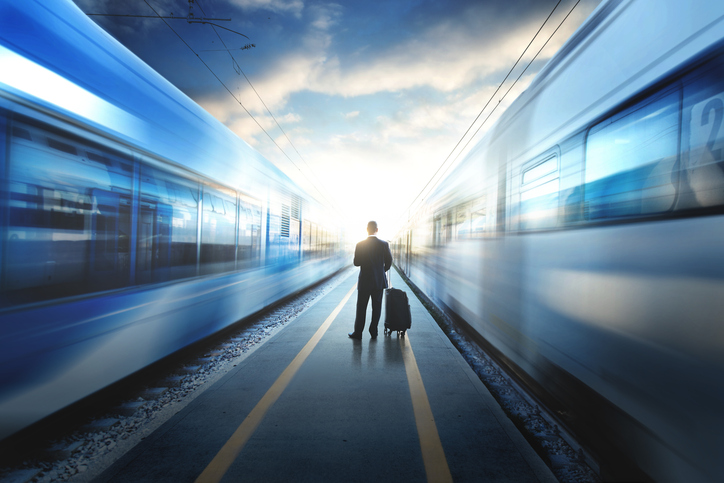Digitalizing Human Transportation: the Case for ITS
- By Winston Thomas
- June 18, 2023

As people shrug off the temporary COVID-19 restrictions, human movement puts transportation networks under immense pressure.
It’s only going to get worse and will become more asymmetric. The U.N. predicts 2.5 billion people will move into cities by 2050, with 90% occurring in Asia.
Replacing a transportation network, however, is not a simple rip-and-replace. It needs a political will, especially when it has a long-term planning cycle, points out Ilya Gutlin, ALE’s senior vice president for APAC.
Regional governments are responding. Singapore’s Land Transport Authority Land Transport Master Plan (LTMP 2040) is the latest blueprint to ease congestion and develop future transportation infrastructure. Others include the Philippine Development Plan for 2023-2028.
All these plans go beyond more roads, railways and waterways. They combine the data from networks and IoT-enabled transportation (as detailed in the Singapore and Philippines plans)—what the industry calls the intelligent transportation system (ITS).
Greener path to ungated innovation
Alcatel-Lucent Enterprise (ALE) laid the foundations for an ITS in Las Vegas in 2017. It worked with the Nevada Department of Transport to deploy a mesh of IoT devices along the highways.
The idea behind such deployments is that the IoT data can help transportation teams and city administrators to understand human movement patterns and take the right action, explains Gutlin.
While the benefits may sound obvious, building an ITS requires “political will to think far ahead of [near-term] transportation issues,” says Gutlin. That’s because governments work with a broad spectrum of suppliers and stakeholders with varied interests.
However, the recent interest in ITS is also coming from a separate direction: ESG. Transportation has been singled out as one of the major polluters. ALE sees ITS as an opportunity to use digitalization and reduce carbon emissions and environmental impact.
“For example, we are one of the partners or one of the vendors building 200 lines, 68 stations of a carbon-free rail line that's going to be ready in time for the Paris Olympics next year,” Gutlin says.
The focus on ESG and sustainability has altered how the government sees transportation. While before, the mantra was on passenger efficiency and improved mobility, today, many (like Singapore) are adding energy efficiency and environmental protection into their transportation plans.
ITS allows the timely provision of data through timely communication and timely proactive decision-making. “This is what's going to reduce the carbon footprint overall,” says Gutlin.
But such data is not just about reducing carbon footprints; it can help us to enable or support new vehicle types, like, for instance, drones and unmanned aerial vehicles (UAVs).
Gutlin believes data and its “timely” sharing will help governments to support new vehicles, such as implementing low-altitude air traffic management that NASA’s UTM and the Swiss U Space promise.
Digital highway patrol
Digitalizing may improve convenience and efficiency while reducing waste. But it can open up a transportation network to increased cyberattacks.
Recent conflicts and rampant cyberattacks on national physical assets have made transportation networks considered as critical infrastructure. This means there can’t be any balance between risks and benefits. “Being from an aviation space, I can tell you the last thing you want is an outage,” says Gutlin.
He adds that building a resilient ITS should be driven from the onset and requires the participation of every stakeholder—a difficult job as public projects tend to involve different suppliers.
“For us, what is very important is a zero trust network, making sure that right from the IoT device down to the access point switches, there is a zero trust layer,” says Gutlin.
Resiliency does not stop there for Gutlin. He believes that should be proactive monitoring of the entire ITS with the ability to inform the right people and have the right tools to mitigate threats.
“This requires tools, sensors, and people in the right positions backed by a very strong process,” says Gutlin.
Traveling to the future
ITS’s main benefit is its ability to help transportation management and city planning teams plan.
“So you've got your planning cycle, and you've got your passenger forecast, but you will be able to amend those forecasts a lot easier if you've got access to passenger data, baggage data and vehicle data,” says Gutlin.
It’s also about solving the last mile of transportation. “You get the people to the train station, but how do they get home from there?” asks Gutlin, saying this is why we have so many ride-hailing and apps for sharing vehicles like bicycles.
ITS also allows planners to think creatively about what’s best for each city, says Gutlin.
“Maybe you're not going to be laying rails because you would figure that with the number of passengers dropping, it may be better off putting in electric buses than train lines. So again, it allows people to look at the future using data.”
Winston Thomas is the editor-in-chief of CDOTrends and DigitalWorkforceTrends. He’s a singularity believer, a blockchain enthusiast, and believes we already live in a metaverse. You can reach him at [email protected].
Image credit: iStockphoto/francescoch










Winston Thomas
Winston Thomas is the editor-in-chief of CDOTrends. He likes to piece together the weird and wondering tech puzzle for readers and identify groundbreaking business models led by tech while waiting for the singularity.